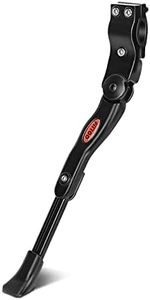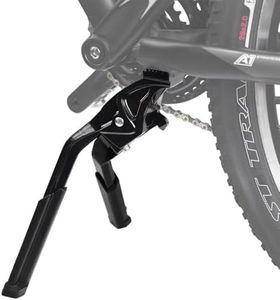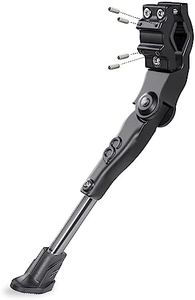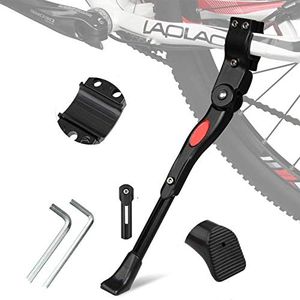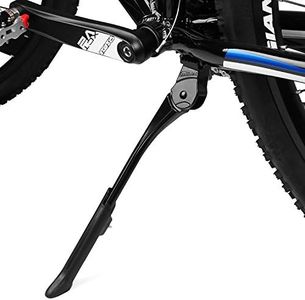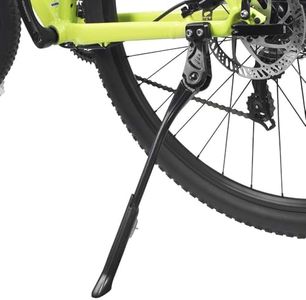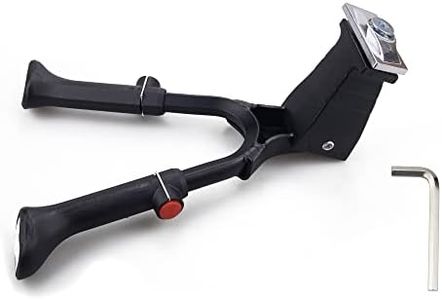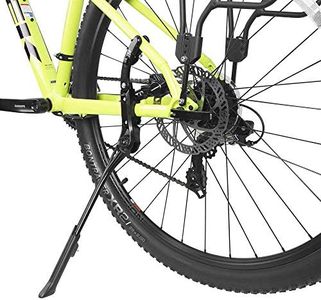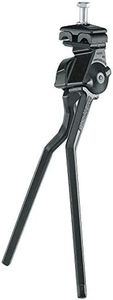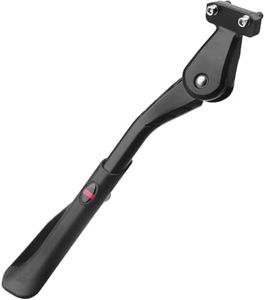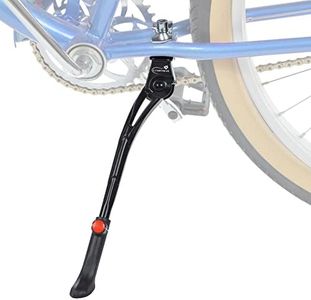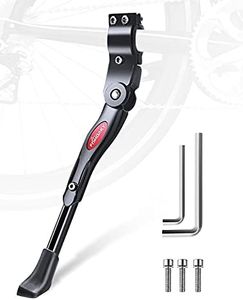We Use CookiesWe use cookies to enhance the security, performance,
functionality and for analytical and promotional activities. By continuing to browse this site you
are agreeing to our privacy policy
10 Best Bike Kickstands
From leading brands and best sellers available on the web.By clicking on a link to a third party's website, log data is shared with that third party.
Buying Guide for the Best Bike Kickstands
Choosing the right bike kickstand may seem straightforward, but getting the best fit for your needs can make a big difference in convenience, safety, and the longevity of your bike. A good kickstand holds your bike upright securely and makes parking it much easier, whether you're commuting, touring, or just riding for fun. Before you buy, consider your typical riding environments, your bike's weight, and how often you'll actually use a kickstand. Think about the installation process too—some bikes come without mounting points, so compatibility matters. Keeping these factors in mind helps ensure you get a kickstand that works seamlessly with your riding style and your bike.Mounting PositionThe mounting position refers to where the kickstand attaches to your bike. There are typically three main types: rear-mount, center-mount, and chainstay mount. Rear-mount kickstands attach near the back wheel, center-mount ones are installed behind the bottom bracket (near the pedal area), while chainstay mounts go on the left chainstay. Rear-mount and center-mount kickstands suit most city or touring bikes, providing stability when parked. Chainstay mounts are generally found on certain bike frame designs. When picking, consider what kind of bike you have—some bikes, like road or mountain bikes, may not have dedicated mounting plates, making certain positions unfeasible. Choose a kickstand with a mounting position compatible with your frame for both safety and convenience.
AdjustabilityAdjustability means whether you can change the length of the kickstand to suit different bike sizes or adjust for uneven ground. Some kickstands have fixed lengths, while others can be easily lengthened or shortened, often with a simple screw or button mechanism. Adjustable kickstands are ideal if you own multiple bikes or if you want more flexibility, ensuring your bike stays level regardless of tire size or changes to your bike setup. If you like to make tweaks or anticipate using the kickstand with various bikes, go adjustable. For a very specific, single bike, a fixed-length can be a solid, lightweight choice.
Weight CapacityThe weight capacity tells you how much load the kickstand can reliably support, including the bike and any gear it’s carrying. Light-duty kickstands are best for basic commuter bikes or kids' bikes, while heavy-duty or touring models can support e-bikes and bikes loaded with racks and bags. If you use your bike mainly for lightweight travel with little to no cargo, a basic kickstand will do. However, for bikepacking, commuting with heavy panniers, or electric bikes, prioritize a kickstand rated for higher weights to avoid bending or accidental tip-overs.
MaterialKickstands are usually made from aluminum, steel, or sometimes composites. Aluminum is lightweight and resistant to rust, making it good for everyday, urban, or touring bikes. Steel tends to be stronger and more durable, suitable for heavier bikes or rough treatment, but it can add weight and may rust if not cared for. Composite materials offer a balance of weight and durability, but are less common. If your priority is minimizing weight, especially for long rides or racing, consider aluminum or composite. For maximum strength or heavy loads, steel is often the best choice.
Single vs. Double LegKickstands come in single-leg and double-leg (also called center-stand) versions. Single-leg kickstands are most common and work well for lightweight bikes and stable surfaces. Double-leg designs, which split into two legs, make the bike stand very upright and are better for added stability—especially useful for cargo, e-bikes, or bikes carrying lots of gear. If you want simplicity and just need the bike to stay upright briefly, a single leg suffices. If you often load up your bike or need extra stability when parked (like on soft ground or with kids’ seats), double leg is worth considering.
